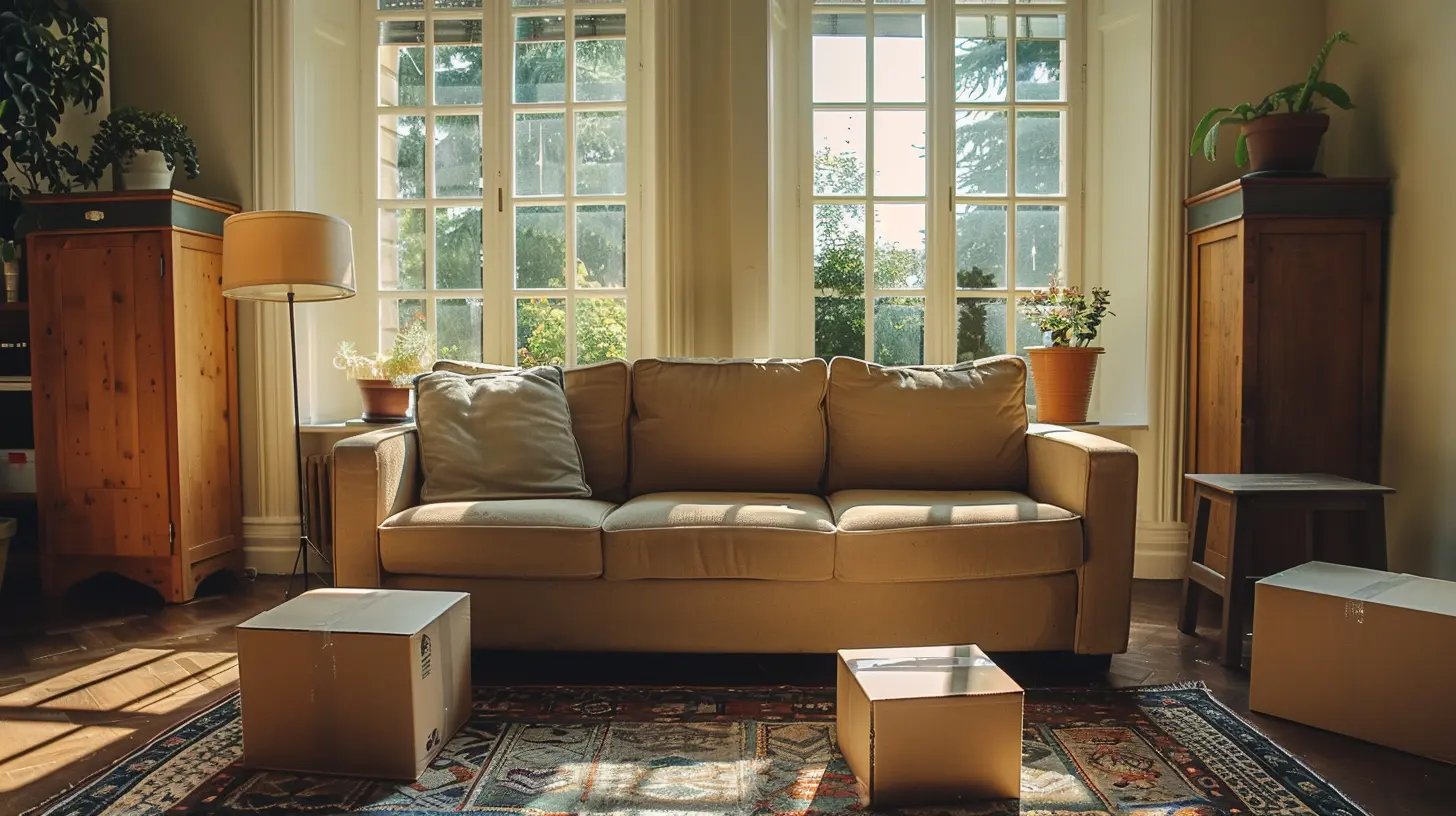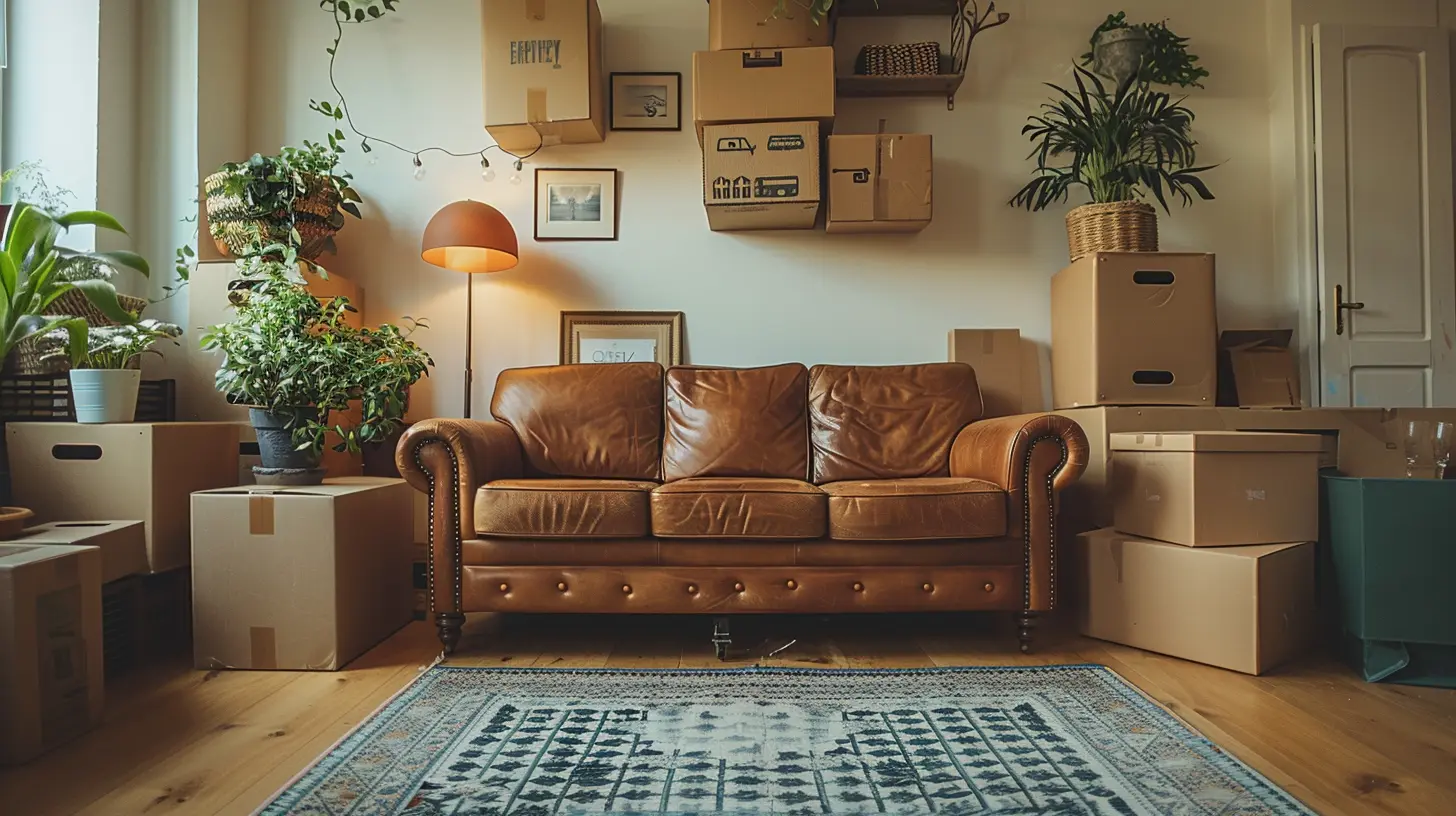Safeguarding Your Furniture: How to Protect It During a Move
3 September 2025
Moving can be an exciting yet stressful experience. Between packing boxes, coordinating logistics, and adjusting to a new space, the last thing you want is to open the moving truck and find your favorite furniture scratched, dented, or—worse—broken.
So, how do you ensure your beloved couch, dining table, and antique dresser make it to your new home in one piece? Simple: by taking the right precautions from the get-go.
In this guide, we'll walk you through foolproof ways to protect your furniture during a move, so you can settle into your new space without damage-related regrets.

Why Protecting Your Furniture Matters
Let's be real—furniture is expensive! Whether it's a high-end sectional or a sentimental heirloom, replacing damaged pieces can be both costly and heartbreaking. Beyond the financial aspect, moving scratches and dings can turn a beautifully curated space into a collection of battered belongings.By taking the right steps before and during transport, you’re not just saving money—you’re saving memories. 
1. Plan Ahead: Don't Wait Until Moving Day
Procrastination is a furniture killer. If you wait until the last minute to figure out how you’ll transport that heavy oak cabinet, chances are, something's going to get damaged.Here’s what you should do in advance:
✔ Take Inventory – List out all the large and fragile furniture pieces. This will help you track each item's condition before and after the move.
✔ Measure Doorways & Hallways – There’s nothing worse than realizing your couch won’t fit through the door at the last minute. Measure everything, including stairways and tight corners.
✔ Gather Supplies – Stock up on protective materials like moving blankets, bubble wrap, packing tape, and furniture sliders well before moving day. 
2. Disassemble When Possible
Some furniture pieces are easier to move when taken apart. Removing legs from tables, dismantling bed frames, and detaching shelves from bookcases not only makes transport easier but also reduces the risk of breakage.How to Properly Disassemble Furniture:
- Keep track of screws and bolts – Use labeled ziplock bags so you’re not scrambling to reassemble your furniture later.- Take pictures before disassembling – This helps jog your memory when putting everything back together.
- Wrap small parts separately – Avoid losing essential pieces by securing them inside a clearly marked box.
If something absolutely can’t be taken apart, make sure it's well-padded to prevent damage. 
3. Use Proper Packing Materials
Throwing a blanket over your furniture might seem like a quick fix, but trust us—proper packing materials make all the difference.Best Materials for Protecting Furniture:
- Moving Blankets – Thick, cushioned blankets absorb shocks and prevent scratches.- Bubble Wrap – Ideal for fragile pieces like glass tabletops and mirrors.
- Plastic Wrap – Keeps drawers and doors from swinging open during transport.
- Furniture Sliders – Minimize floor damage and help move heavy pieces more smoothly.
Investing in high-quality packing supplies now can save you from expensive repairs later.
4. Wrap It Right: Techniques for Maximum Protection
Not all wrapping methods are created equal. Using the right technique ensures your furniture stays in pristine condition.Pro Tips for Wrapping Your Furniture:
✔ For Wood & Delicate Finishes – Avoid using plastic wrap directly on the surface. Instead, layer furniture blankets first, then secure with the plastic wrap. This prevents moisture buildup and potential damage.✔ For Upholstered Furniture – Use plastic wrap or furniture covers to shield against dirt, dust, and unexpected spills.
✔ For Glass Items – Cover edges with foam padding, wrap the piece in bubble wrap, and place it in a custom-sized box if possible. Mark it as “FRAGILE” to avoid rough handling.
A little extra care during wrapping can be the difference between a flawless move and a furniture disaster.
5. The Right Way to Load Furniture onto the Moving Truck
Poor loading techniques can turn a perfectly packed piece into a scratched mess. Follow these simple guidelines to load like a pro:Loading Tips for a Damage-Free Move:
- Heaviest Items Go First – Place sofas, dressers, and large tables against the back of the truck to create a stable base.- Use Tie-Downs – Secure furniture pieces with ropes or straps to prevent shifting during transit.
- Keep Fragile Items Upright – Glass surfaces, mirrors, and TVs should always be transported upright and well-padded.
- Distribute Weight Evenly – An unevenly loaded truck can cause tipping and shifting, which leads to damage.
By taking your time to load things properly, you massively reduce the risk of in-transit damage.
6. Protect Your Floors and Walls While Moving
Scraping the floors or denting the walls can be just as frustrating as damaging your furniture.How to Prevent House Damage While Moving Furniture:
- Use Furniture Sliders – Reduces friction and prevents scratches on hardwood floors.- Cover Door Frames – Wrap blankets or cardboard around doorframes to avoid accidental dings.
- Lay Down Floor Runners – Helps protect against dirt and damage, especially in high-traffic areas.
Taking care of your old and new home ensures you don’t lose your security deposit or end up with unexpected repair costs.
7. Hire Professional Movers (If Possible!)
Sometimes, the best way to protect your furniture is to let the pros handle it. Professional movers have the experience, equipment, and techniques to ensure everything arrives unscathed.When hiring movers, look for:
- Good reviews and references – Avoid companies with a history of careless handling.
- Proper licensing and insurance – Ensures you're covered in case of accidental damage.
- Experience in handling delicate furniture – Not all movers know how to transport antiques and high-value pieces properly.
If you prefer a DIY move, at least consider getting help for heavier items to reduce the risk of lifting-related accidents.
8. Unpacking: The Final Step in Furniture Safety
You’ve made it to your new home—congrats! But don’t let excitement lead to carelessness while unpacking.Key Unpacking Tips:
✔ Unwrap Carefully – Rushing can lead to accidental drops or scratches.✔ Reassemble Methodically – Refer to the pictures and labeled parts you planned earlier.
✔ Check for Damage Immediately – If something got damaged, document it right away for potential insurance claims.
Taking your time will ensure your furniture looks just as great as it did before the move.
Final Thoughts
Moving doesn’t have to be a furniture nightmare. With a little planning, the right materials, and a careful approach, your prized possessions can make the journey safely.Remember, your furniture is an investment, both financially and sentimentally. Give it the protection it deserves, and it will serve you well in your new home for years to come.
all images in this post were generated using AI tools
Category:
Moving TipsAuthor:

Kingston Estes
Discussion
rate this article
1 comments
Quinn McMillan
Moving can be a stressful experience, and protecting your furniture is essential to ensuring a smooth transition. I appreciate the thoughtful tips in this article. Taking the time to safeguard our belongings not only preserves their value but also eases the emotional toll of relocating. Thank you for sharing this valuable advice!
September 13, 2025 at 2:22 AM

Kingston Estes
Thank you for your thoughtful comment! I’m glad you found the tips helpful. Protecting your furniture truly makes a difference during a move. Best of luck with your transition!


